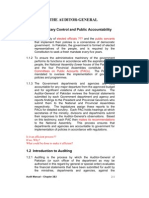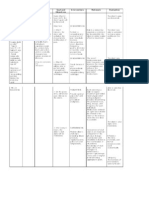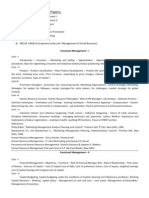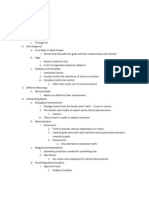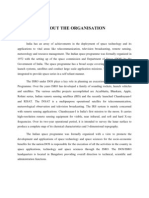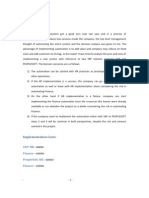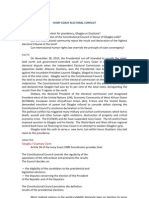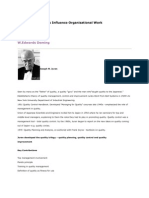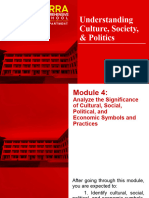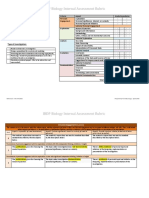Relationship Between Motivational Factors and Satisfaction Among Employees of Jbatan Kerja Raya Kudat
Mohammad Izham Bin Johran Abdul Razak Bin Chuli
�Abstract This study aimed to investigate the relationship between motivational factors and satisfaction among the employees of Jabatan Kerja Raya Kudat. The prime of the study is to find out the employees perception of job satisfaction and the factors which affect the job satisfaction. It also attempted to establish the relationship between salary, working environment and academic qualification. The investigation conducted by using open ended and close ended questionnaire.
Background of the Study The top management of the Jabatan Kerja Raya Kudat has to find out the ways and means on how to increase the satisfaction on conducting their job in order to increase the productivity of their job and the organization. Understanding and satisfying the needs and wants of the employees is continually the biggest challenge for the leader of the Jabatan Kerja Raya Kudat.
Overview of the Organization Based on the archived document, the Public Works Department Sabah was formed during the British North Borneo Chartered Company era, that was 1st. November 1881. The Public Works Department then was only given a very small role in the infrastructure aspect in view of the main trade entry point were ports and the main transportation network was the railway system that was connecting the districts. The Department then was headed by a Chief Works Officer only and acted as an agency that was playing a supporting role to the North Borneo Chartered Company. Among the Chief Works Officers, one of them who had served the Public Works Department then was Mr. E.A. Pavit in the year 1896. British North Borneo Company was dissolved by the British Government s instructions in the year 1930 and the State Of North Borneo was formed as a British Protected State .The State of North Borneo was administered by a Governor then. The Administration of the State Of North Borneo (British protected State) was also subsequently dissolved on 10hb. July 1946 through a Letter of Patent and Royal Order. The State of Borneo was placed under the Crown Colony that was ruled by the British Queen and run by a Governor. In 1948, the Public Works Department was given a bigger role, run as a department that was given the responsibility of infrastructure development planned by the
�Government. The Director of Public Works was appointed as an advisor to the Governor in the infrastructure development and was also a permanent member in the State Advisory Council. Mr. P. O. Cornell was appointed as the first Director Of Public Works to head the Public Works Department. Among various early planning, road connections by Districts was one of them. Expertise and machineries were brought in by the British Government to implement the works that were planned. Local workers were also employed. Among the works planned, construction of road from North to South, East To West and the interior. On top of that, the Public Works Department was also given the role of putting up airfields, hospitals, port jetties and government buildings.
Problem Statement Job satisfaction is good and very important in order to increase productivity and decrease staff turnover. When employees are happy, performance of the organization will be increased. When the people satisfied with their job, they will happy to do it. It motivates them to do their job by effectively and efficient. The output and the quality of their job are good. Then the staff turnover also will reduce because of everybody happy and satisfied with their job. In this study, several variables will be tested to know the relationship whether it is really important for the employees to satisfy with their job.
Literature Review 1. Job Performance in Relation to Job Satisfaction In the field of Industrial/Organizational psychology, one of the most researched areas is the relationship between job satisfaction and job performance (Judge, Thoresen, Bono, & Patton, 2001). Landy (1989) described this relationship as the Holy Grail of Industrial psychology. Research linking job performance with satisfaction and other attitudes has been studied since at least 1939, with the Hawthorne studies (Roethlisberger & Dickson, 1939). In Judge et al. (2001), it was found by Brayfield and Crockett (1955) that there is only a minimal relationship between job performance and job satisfaction. However, since 1955, Judge et al. (2001) cited that there are other studies by Locke (1970), Schwab & Cummings (1970), and Vroom (1964) that have shown that there is at least some relationship between those variables.
�Iaffaldano and Muchinsky (1985) did an extensive analysis on the relationship between job performance and job satisfaction. Across their many studies, they found a mean correlation of .17 (Iaffaldano & Muchinsky, 1985). There are also stronger relationships depending on specific circumstances such as mood and employee level within the company (Morrison, 1997). Organ (1988) also found that the job performance and job satisfaction relationship follows the social exchange theory; employees performance is giving back to the organization from which they get their satisfaction. Judge et al. (2001) argued that there are seven different models that can be used to describe the job satisfaction and job performance relationship. Some of these models view the relationship between job satisfaction and job performance to be unidirectional, that either job satisfaction causes job performance or vice versa. Another model states that the relationship is areciprocal one; this has been supported by the research of Wanous (1974). The underlying theory of this reciprocal model is that if the satisfaction is extrinsic, then satisfaction leads to performance, but if the satisfaction is intrinsic, then the performance leads to satisfaction. Other models suggest there is either an outside factor that causes a seemingly relationship between the factors or that there is no relationship at all, however, neither of these models have much research. The final model is Alternative Conceptualizations of Job Satisfaction and/or Job Performance. This model discusses how positive attitudes toward one s job can predict a high degree of job performance. George and Brief (1996) and Isen and Baron (1991) both found that employees attitudes are reflected in their job performance. If this is the case, then we can argue that there is a relationship between employees job satisfaction and job performance, as satisfaction is an attitude about their job. Industrial psychologists do not justify any relationship between job satisfaction and job performance, although it has been found
2. Job Performance and Job Satisfaction in Relation to Personality Type As stated above, job satisfaction in relation to many factors is one of the most researched areas of worker attitudes. However, there are other factors to consider when looking at what makes an employee do well on the job. One construct that has been used to predict job performance is personality. This is one area that is criticized by many people as something that may not be valid to use (Rothstein & Goffin, 2000). Despite these criticisms, most researchers feel that studying the relationship between personality and job performance is extremely useful (Goffin, Rothstein, & Johnston, 2000).
�Dachler (1978) found that, over time, satisfaction with a job remains unusually stable, which made them believe that it was people s personality that was due to the satisfaction with their job, rather than other variables. Most studies dealing with job satisfaction in relation to personality are conducted in large organizations, however, very few have been done to view the impact on smaller organizations (Morrison, 1997). There are many different personality factors that have been correlated to job satisfaction, but overall, there seem to be two traits that have significant correlations: locus of control and negative affectivity (Spector, 1997). Locus of control refers to people s beliefs about how much control they have over their job, life, or various other factors (Rotter, 1966). Locus of control has been correlated with job performance as well as job satisfaction (Spector, 1997). Negative affectivity is people s tendency to have negative emotions, independent of the situation (Watson, Clark, & Tellegen, 1988). This is correlated to job dissatisfaction because if people feel negative overall, they will be negative about their job as well (Spector, 1997). According to Buss (1992), the Big Five factors (which for this study are Cattell s five Global factors of: extraversion, anxiety, tough-mindedness, independence, and self-control) have some influence on job performance. The original big five personality factors are emotional stability, extraversion, intellect/openness, agreeableness, and conscientiousness (Acton, 2002). Acton (2002) compared the big five to Cattell s global factors. He found that extraversion is the same in both, tough-mindedness was the big five version of agreeableness, anxiety was the version of emotional stability, independence was the version of openness to experience, and self-control the version of conscientiousness. It seems to be a common assumption that employees who are happy with their job, should also be more productive at work (Spector, 1997). It has been hypothesized that if above average performance is rewarded on the job, then the correlation between job satisfaction and job performance would be higher (Jacobs & Solomon, 1977). There has been recent research that has shown relationships between personality and job performance in firefighters (Liao, Arvey, & Butler, 2001). Specifically, the study by Liao et al. (2001), found that the MMPI trait of social introversion was significantly negatively correlated to injury frequency (r =-.08). The reason stated for underlying this finding is that introverts tend to be less social and because firefighters need to work as a team, introverts may be less likely to ask for help when needed. This, in turn, also creates more hazards on the job, and subsequently, more job-related injuries.
�Abraham (2000), reviewed personality on the basis of cynicism towards an organization. It was found that personality cynicism was the best predictor of job satisfaction, because it explains 57% of the variance in job satisfaction, t(53) = -8.54, p < .01.
3. Motivation For firefighters to want to have to risk their own lives for the sake of others, there has to be something greater in it for them. Extrinsic motivators alone cannot explain why a person may choose firefighting as a career, since firefighters do not make a great deal of money (Cunningham, 2002). Their job is even ranked as one of the least desirable in the country because of the danger threats imposed, the low level of income, the high level of physical demands, the high level of stress, low level of job security due to job-related injury and the type of working environment (Casey, 2000). However, Casey (2000) also stated If I were to measure the worth of a fireman s job, I would probably put it number one, or very high up there. One intrinsic motivator that may account for a person choosing the firefighting profession is saving another person s life. Firefighters have one of the most dedicated and motivated professions in the world (Cunningham, 2002). A firefighter is also seen as one of the most ethical and honorable positions a person can hold; they are most trustworthy in the consensus of the public (Cunningham, 2002). To want to go into burning buildings and rescue complete strangers, firefighters have to be a very motivated group of people with a sense of organization and teamwork (Casey, 2000; Cunningham, 2000).
�Research Methodology There will be two types in collecting data for this mini research endeavor: Secondary Data Secondary data are those data that have already been collected for purpose other than the problem at hand. These data can be located quickly and inexpensively. y Jabatan Kerja Raya Web page Internet surfing is online information that is related to this research Previous thesis and papers Related information also can be collected from the previous thesis and project paper from students. Reference Books Reference books can be very useful to the researcher to get the necessary information in order to accomplish this research study. The reference books could be obtained from the library and from various bookstores.
Primary data Questionnaire A structured technique for data collection of a series of questions, written or verbal in which respondent answers. It is a formalized set of questions for obtaining information from respondents. In doing this research study questionnaire were distributed to the staffs of the Jabatan Kerja Raya Kudat by randomly.It distributed to 15 respondents.
Data Analysis Researcher will provide data analysis in regards to the interpretation of responses from the questionnaires provided. The amount of questionnaires has been limited to 3 main questions only.
�Finding and Analysis There are 3 major factors that will increase the staffs motivation and will tend to be satisfied with their job are salary, working environment and academic qualification. So these are the findings and the analysis from the researched.
y
9 8 7 6 5 4 3 2 1 0
Salary
unsatisfied average satisfied
salary
From the finding, 8 from 15 respondents are satisfied with their salary. Which means they are satisfy with the payment of their job and happy with the job they have been conducting every day. In addition, 5 respondents treat their salary as an average which means they don t care about their payment whether it affordable or not as long as pays based on their scale. For example for the grade N27, the basic salary they should receive is RM 1479.50. Besides that, 2 respondents dissatisfied with their salary. Dissatisfied because there is no more increment in term of their salary, they have been working with the government for many years and been taking all the required exams but they cannot get the increment of the salary unless they got Degree certificate to get higher salary and higher grade of scale. It makes them dissatisfied in handling their job, even if they perform or not, the amount of the salary that they will receive stills the same. More than that, they have to work more than they suppose to get, sometimes the boss asks them to do the job outsides of their job description make them feel dissatisfied with their job.
Academic Qualification
16 14 12 10 8 6 4 2 0 Academic Qualification unsatisfied average satisfied
Most of the respondents satisfied with their current position because of academic qualification because of the field study are related with their job. For example, he took a Diploma in Accountancy and being attached to the account section, he will happy because can practical its study there. Only 1respondents dissatisfied with their academic qualification is not related with their position. Example, graduated in management but do the account job. It reduces the employee morale to like his job.
Working Environment
8 7 6 5 4 3 2 1 0 Working Environment unsatisfied average satisfied
According to the research,7 respondents satisfied with the working environment because of been working in the same section for a long time. They feel comfort to do their job. They treat every person of their section as a family. They help each other in order to make things done right. They love their job because of the comfort working environment. Besides that, 2 respondents answered average they can easily get along with the working environment. In addition, 5 respondents dissatisfied because of lack of leadership of their section s head. They don t like the leader to act bossy but actually he doesn t really know what to do.
�Conclusions � Salary is highly motivates the staffs to satisfy with their job. The staffs are happy when the payment is suitable with their job description. Working environment is one of the element in determines the job satisfaction. Worst working environment can reduces the performance of the staffs and lead to dissatisfaction in doing job. In addition, when the field study is related with the academic qualification, they can fully utilize their knowledge and lead to job satisfaction.
Recommendations � District engineer should tell the staffs about their job description to avoid other staffs being a free ride in the organization. Everybody will know what actually their job description is. One of the best way to know what they should do every day is by providing each person with a Table File ( File Meja) which all the details of the job descriptions are stated there. Besides that, District Engineer, should provides a good working environment which can comfort every staffs of the organization such a good culture where they can treat each other like one family. Leader should make the Morning Prayer every morning, so all the latest news or anything regarding the organizations matters will be known by all the staffs. The will be share the same values, beliefs, cultures and goal of the organization. In order to reduce the dissatisfied due to different of study field with the current position, District Engineer should provides training to the staffs to get more knowledge. Even though they cannot practice what they had learned during their study, they can gain knowledge from the training. They can apply it and enjoy when in doing their job. By doing so, the job satisfaction of the employees can be increase.
�Appendix Questionnaire General views of the employees of jabatan Kerja Raya Kudat about the motivational factors toward their job satisfaction. Section A 1.Gender ( ) Male ( ) Female
2. Race ( ) Muslim Bumiputera ( ) Non Muslim Bumiputera ( ) Non Bumiputera
Section B Does these Factors are highly important toward the employees job satisfaction?
1. Salary
) unsatisfied
) average
)Satisfied
2. Working Environment
) unsatisfied
) average
)Satisfied
3. Academic Qualification
) unsatisfied
) average
)Satisfied


